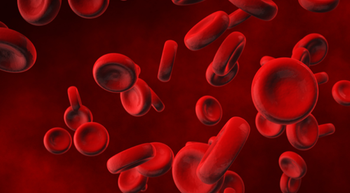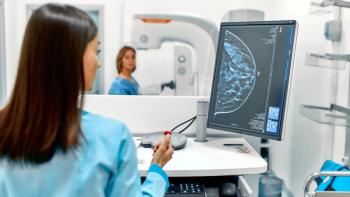
How Can Nurses Provide Better Symptom Management for Patients With MPNs?
A nurse-led clinic to aid in patient-reported symptom burden had high patient satisfaction.
While patients with myeloproliferative neoplasms (MPNs) suffer from a number of disease- and treatment-related symptoms, the use of a structured nurse-led clinic may aid in monitoring these symptoms and identifying patients with a greater need for support, potentially decreasing the gap between patient- and clinician-reported symptom assessment in this tumor type.1
A pilot study shared in an abstract at the 2025 European Hematology Association Congress reported results of a pilot, nurse-led clinic to understand the impact of MPNs. The clinic collected patient-reported outcomes tracked in a patient diary and measured with questionnaires during nurse-led clinic visits. Patient care satisfaction was measured at the end of visits.
Notably, these data demonstrate that a nurse-led clinic could facilitate a system for patients to report their own symptom burden, where previous findings have demonstrated discrepancies exist between patient- and physician-reported symptom assessment.1,2
What Symptoms Did Patients With MPNs Report?
Prior focus groups determined the patient-reported outcome measures and patient-reported experience measures assessed. Among these were disease-specific symptoms, malnutrition risk, mental health, medication adherence, and quality of life (QOL).1
Fatigue was reported as the most debilitating symptom by 21 patients (70%) and was more frequent in patients with polycythemia vera (4/5 patients) and myelofibrosis (6/7 patients). The mean severity of fatigue in those conditions were 5.4 out of 10 points and 5 out of 10 points, respectively.
In this group, fever was reported by 1 patient and night sweats by 3; 3 patients were also deemed as being at risk of malnutrition, and patients had an optimal mean adherence of 24.6 out of 25 (SD, 0.9). Mean scores of anxiety and depression, assessed with GAD7 and PHQ9, respectively, were 1.9 points (SD, 5.3) and 4.6 points (SD, 4.8).
Mean patient satisfaction with the clinic was 9.2 out of 10 (SD, 1.9).
The study enrolled 30 patients, including 18 with essential thrombocytopenia, 7 with myelofibrosis, and 5 with polycythemia vera. Patients had a mean age of 70.8 years (range, 53-85), and 17 of them were female.
How Did This Report Compare to Previous Data on MPN Symptom Reporting?
Recent findings that compared physician-reported symptom burden and patient-reported symptom burden for 3979 patients with MPNs in Germany demonstrated that patients reported significantly higher symptom burden than did physicians.2
Fatigue was reported in 82% to 85% of patients across MPN diagnoses, while physicians reported fatigue in 26% to 36% of patients across MPN diagnoses (P < .001). Similarly, the pruritus in was reported by 60% of patients with polycythemia vera and 27% of their physicians (P < .001).
Patients were asked to score their symptoms from 0 (“absent/as good as it can be”) to 10 (worst-imaginable/as bad as it can be), and the physician’s assessment was a yes or no question of symptom presence. Two assessments of symptom prevalence were reported: one where prevalence was defined as a patient-reported score from 1 to 10 and one where prevalence was defined as a patient-reported score from 4 to 10.
Cohen’s kappa measurements of the level of agreement between patients and physicians revealed a “minimal” highest level of agreement at 30% (95% CI, 25%-31%) where symptom prevalence is defined as 1 to 10, and a “weak” highest level of agreement at 41% (95% CI, 16%-66%) where symptom prevalence where prevalence was defined as 4 to 10.
Level of agreement was categorized as “none” for fever (5%; 95% CI, 0%-11%), night sweats (18%; 95% CI, 15%-21%), weight loss (20%; 95% CI, 16%-24%), fever (11%; 95% CI, 2%-19%), and pain (15%; 95% CI, 11%-20%) where prevalence was defined as a 1 to 10.
Likewise, where symptom prevalence was defined as a score of 4 out of 10 or higher, level of agreement was categorized as “none” for fever (11%; 95% CI, -2%-24%) and pain (19%; 95% CI, 14%-24%) where prevalence was defined as 4 to 10.
Nurses’ Role in MPN Burden Assessment
While the nurse-led clinic was only evaluated in a pilot study with 30 patients, the clinic’s aim to standardize symptom evaluation aligns with findings that physicians and patients are not in agreement in terms of symptom reporting.1,2 Additionally, the clinic was intended to identify at-risk patients in a timely manner in order to connect them with appropriate supportive care.
“Most patients could benefit from standardized symptom monitoring and dedicated time for communication on symptom management and treatments,” wrote authors of the study on the nurse-led clinic.
References
- Berardinelli D, Sinisi F, Ventimiglia I, et al. A structured nurse-led clinic for patients with myeloproliferative neoplasms: a pilot study. Presented at: 2025 European Hematology Association Congress; June 12-15, 2025; Milan, Italy. Abstract PB3796.
- Manz K, Heidel FH, Koschmieder S, et al. Comparison of recognition of symptom burden in MPN between patient- and physician-reported assessment - an intraindividual analysis by the German Study Group for MPN (GSG-MPN). Leukemia. 2025;39(4):864-875. doi:10.1038/s41375-025-02524-7
Newsletter
Knowledge is power. Don’t miss the most recent breakthroughs in cancer care.






























































































